Santa Cruz Vala AL
Wheel Size: 29’’ front / 27.5’’ rear
Suspension Travel:
- Frame travel: 150 mm
- Fork travel: 160 mm
Geometry Highlights:
- Sizes offered: S, M, L, XL, XXL
- Headtube angle: 64.0°
- Reach (size L): 478 mm
- Chainstay length (size L): 445 mm
Drive System Highlights:
- Motor: Bosch Performance Line CX
- Torque: 85 Nm
- Power: 600 Watts
- Battery: 600 Wh
- Display: Bosch System Controller
- Remote: Bosch Wireless Mini Remote
Frame Material: Aluminum
Price: Complete bikes starting at $5,999
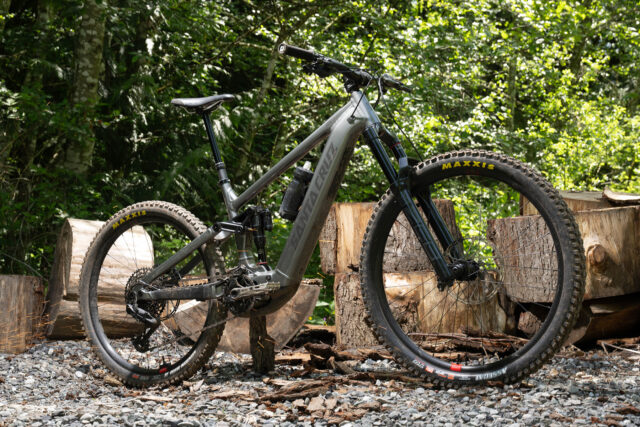
Intro
Santa Cruz surprised us with a four-bar, acronym-free suspension layout on the carbon Vala, and now they’ve surprised us again with a new aluminum version. Given the recent popularity of metal bikes, perhaps we should’ve predicted it, but Santa Cruz abandoned aluminum frames in their suspension bikes a few years ago, and all of their eMTBs so far have been carbon, so we didn’t see this one coming.
We spent a good bit of time on the Vala and came away impressed, rating it as one of the top eMTBs in the Trail category. Not surprisingly, the Vala AL also gets the same four-bar treatment and very similar geometry, with Santa Cruz claiming it offers the same ride quality as the Vala.
Santa Cruz’s plan with the new Vala AL makes sense — make it cost less, and therefore make it accessible to more riders. Let’s dig and see how it all comes together.
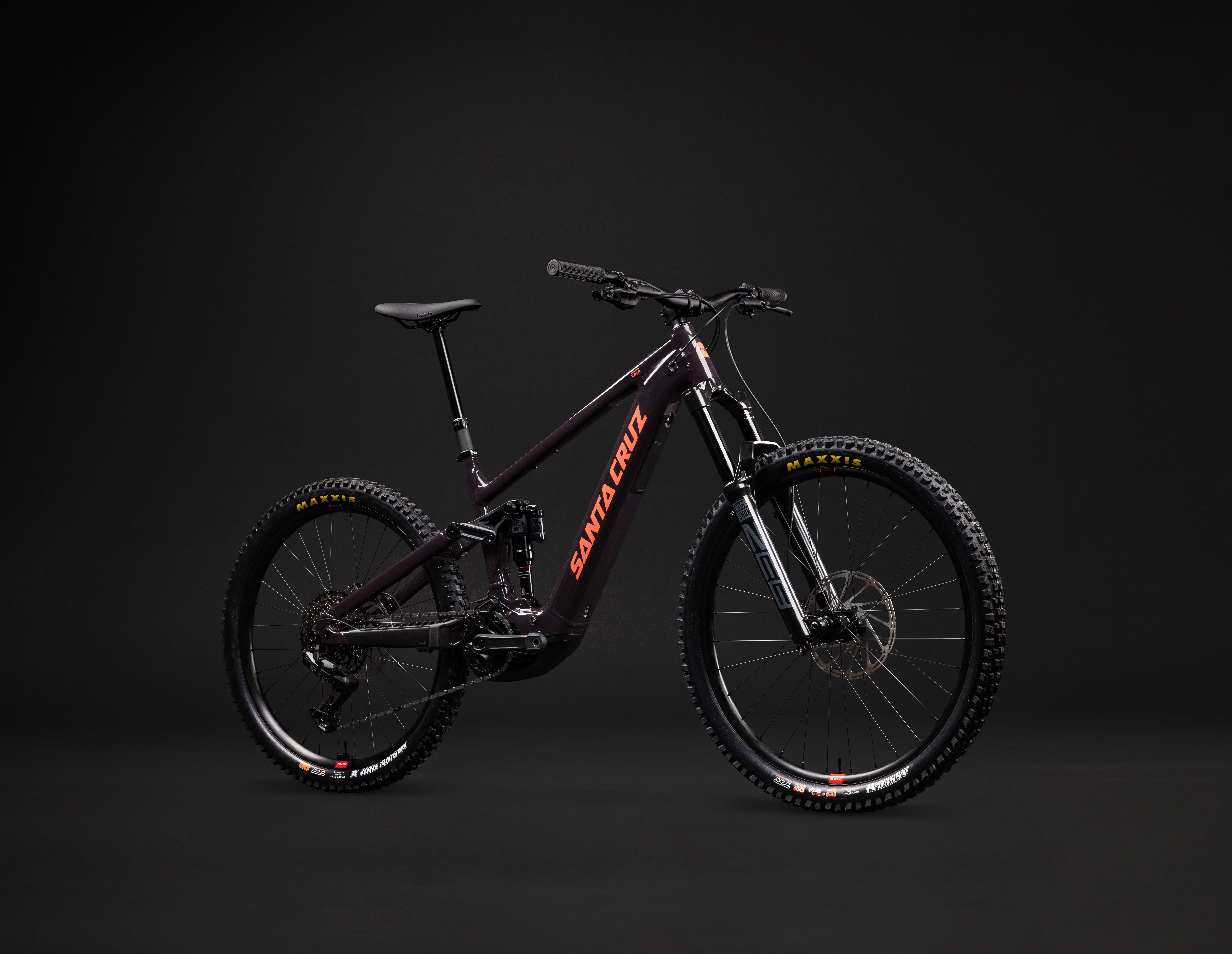
The Frame
Santa Cruz has kept things simple with the new aluminum frame for the Vala AL: they’ve done away with adjustability and settled on a geometry that falls between the Hi and Lo settings of the Vala.
The rest of the details remain pretty much the same as the carbon Vala. The Vala AL is a mixed wheel affair, and this seems to be an increasingly common trend as eMTB manufacturers try to design geometry around sizable motors, but also due to the somewhat more playful feel that a smaller 27.5’’ wheel can bring to a hefty eMTB.
The Vala’s 150 mm of travel is provided by a Horst Link four-bar design, meaning that the rear triangle has a pivot at the chainstay just below the rear axle. According to Santa Cruz, building a frame around a large full-power motor would require too many compromises in pivot placement with a VPP design. To get the suspension performance that the team wanted, Santa Cruz moved to a four-bar arrangement, which allows for much simpler packaging of the main pivot.
Suspension kinematics charts tell a clearer story. The Vala’s anti-squat is far lower and the curve is more linear than on the Heckler 9 and Heckler SL, which should offer more active suspension while reducing pedal kickback. Anti-rise also looks far different compared to the Heckler 9 — again, lower with a more linear curve — for more active suspension under braking. The leverage ratio has been decreased on the Vala thanks to using a longer 60 mm stroke shock (compared to 55 mm on the Heckler 9 and Heckler SL).
The carbon Vala has a flip chip at the lower shock mount that allows riders to choose between a low progression setting (26%) or high progression option (29%), but the Vala AL doesn’t have them, and Santa Cruz hasn’t specified what the progression rate is for the new fixed position. We’ve reached out for clarification.
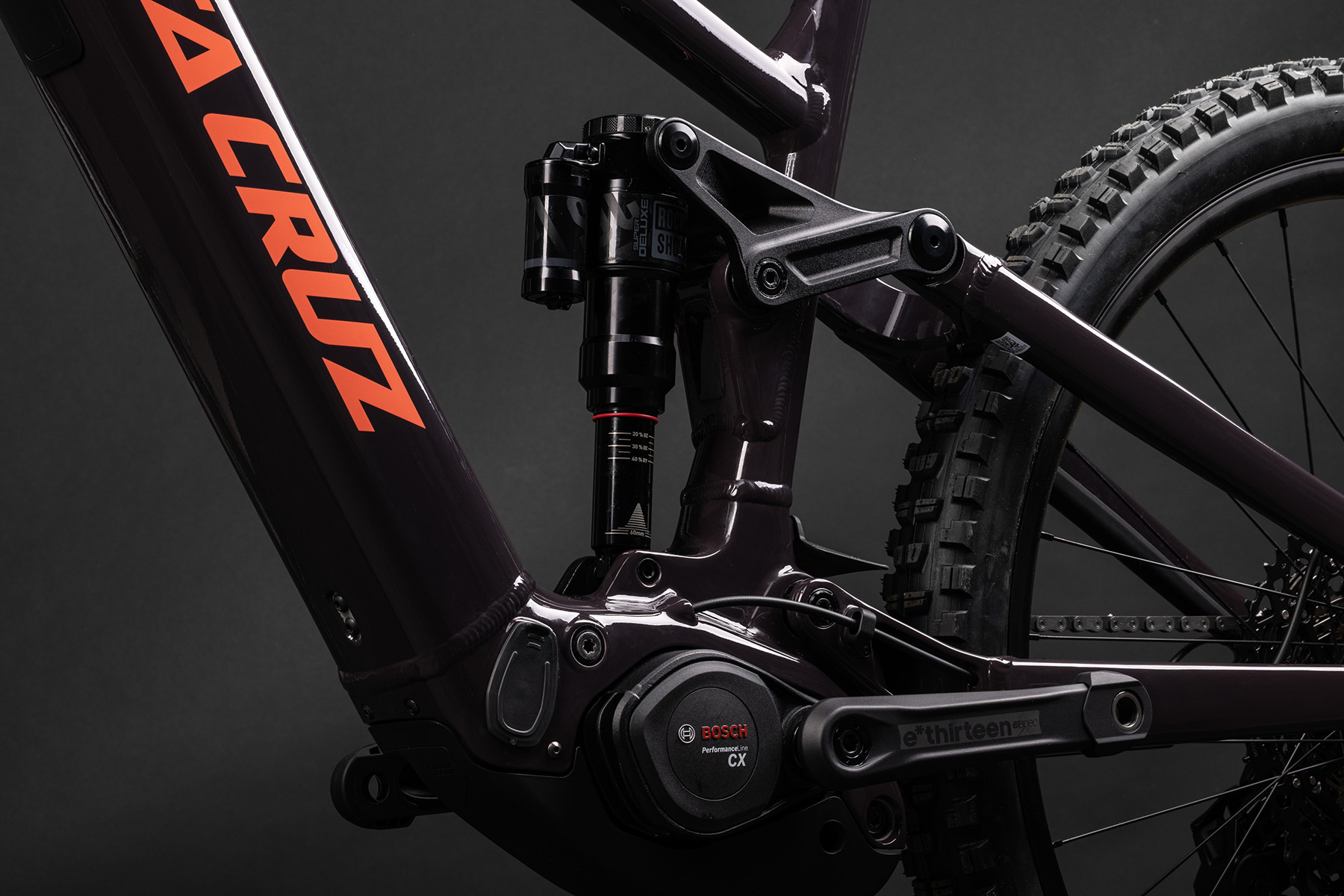
The shock is driven by a one-piece upper link, and a seatstay bridge just behind the link improves frame stiffness for the added weight of an eMTB.
Santa Cruz has a bit of a reputation for particularly robust frame hardware and pivot designs, and that holds true with the Vala AL. The main upper and lower pivots use locking collet axles to keep things secure, and all pivot hardware uses a 5 mm allen key. The threads at the lower shock mount, chainstay, and seatstay pivots are all replaceable to prevent potential frame damage, and an axle at the seatstay pivots holds all hardware captive so that the pivots can be disassembled without washers and small parts being dropped.
The simpler shapes of the Vala’s frame, afforded by the new four-bar design, also allow for more seatpost insertion depth relative to the VPP-equipped Heckler. And while the inclusion of a battery eliminates any chance of downtube storage, there are still accessory mounts under the top tube.
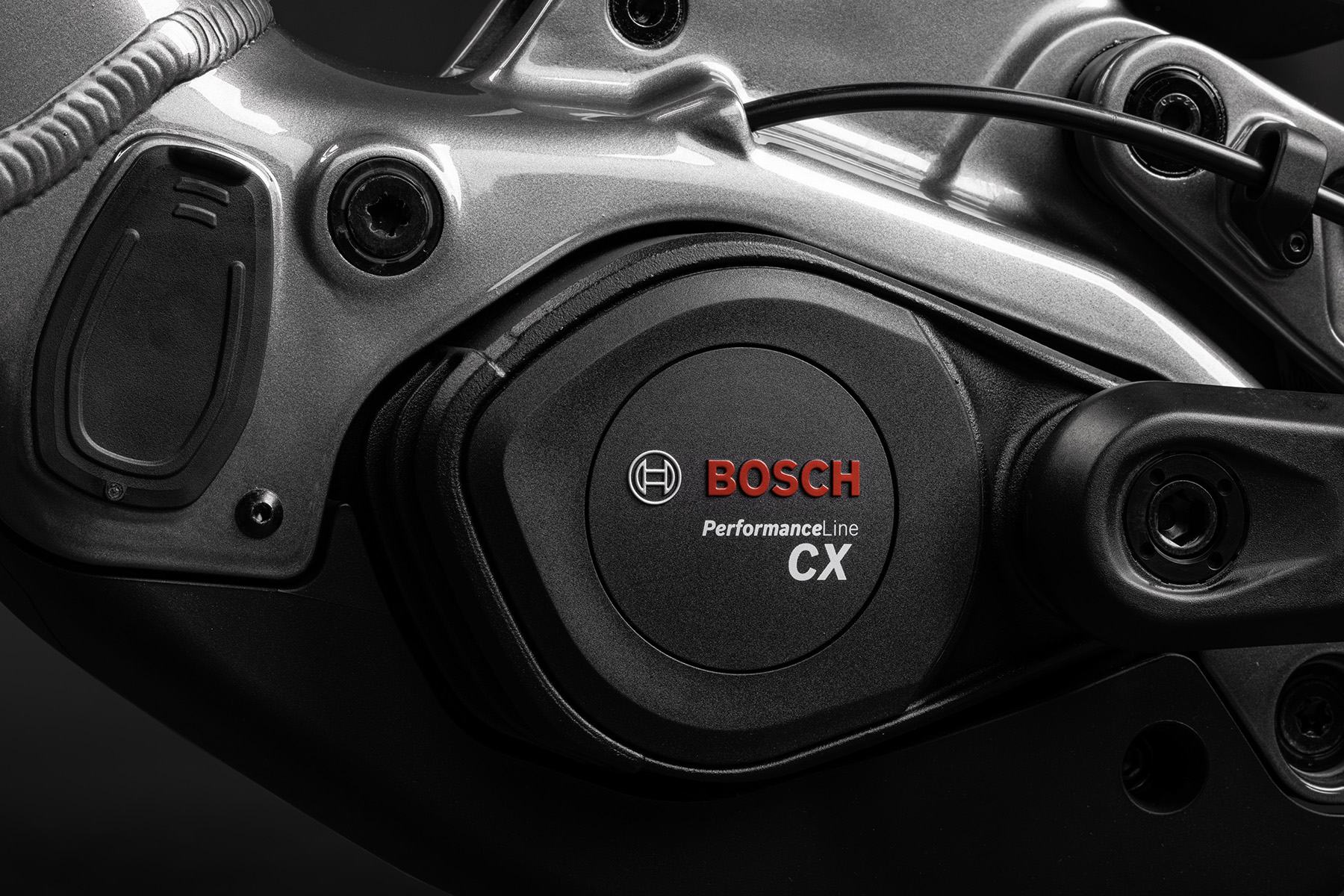
Drive System
The Vala Al’s drive system is the latest Bosch Performance Line CX motor, which claims to be quieter, lighter, and smaller than before. We’ve spent extensive amounts of time on it and have been very impressed with its performance.
Santa Cruz has given the aluminum version the same Bosch 600 Wh as the carbon Vala. Santa Cruz’s rationale for using this smaller battery makes a lot of sense, though — for one, the 600 Wh battery is a full 2.2 lbs / 1 kg lighter than the next size up (800 Wh). The battery is also physically smaller, allowing designers more room while also helping to keep the weight sitting lower in the frame. With claimed weights for both builds in the 53 lb / 24 kg range, I think sticking with the 600 Wh battery was a good move.
We’ve become quite fond of the smaller 600 Wh battery when used in conjunction with Bosch’s 250 Wh PowerMore range extender. We appreciate the handling characteristics that the lower weight of the smaller battery affords. Then, mount the range extender for a combined 850 Wh of capacity, and you add a ton of versatility for long adventure rides.
Bosch now has a Performance Software Upgrade available for the Gen 5 CX motor, which increases power and torque, as well as adds a new eMTB+ mode. We installed the upgrade on our Santa Cruz Bullit test bike, and the results are impressive. Given that the new Vala AL is heavier than the carbon version, adding a bit more punch to the motor may not be a bad idea.
Fit & Geometry
Like we mentioned in the Frame section, one of the key differences between the carbon and aluminum versions of the Vala is the removal of geometry and suspension adjustments. The Vala AL lands mostly in the middle between the Hi and Lo geometry settings of the carbon Vala, and Santa Cruz labels it as Mid geometry.
What that means for the numbers on a size Large is a 478 mm reach, 64º head tube angle, 76.8º effective seat tube angle, and 445 mm seat stays. Those numbers do fall in between the Vala’s Hi and Lo settings, except for the chainstays, which are outside of the range on the long side. Overall, I think Santa Cruz’s decision to have non-adjustable geometry simplifies things and likely helps to keep the cost down, too. Full geometry figures are as follows:
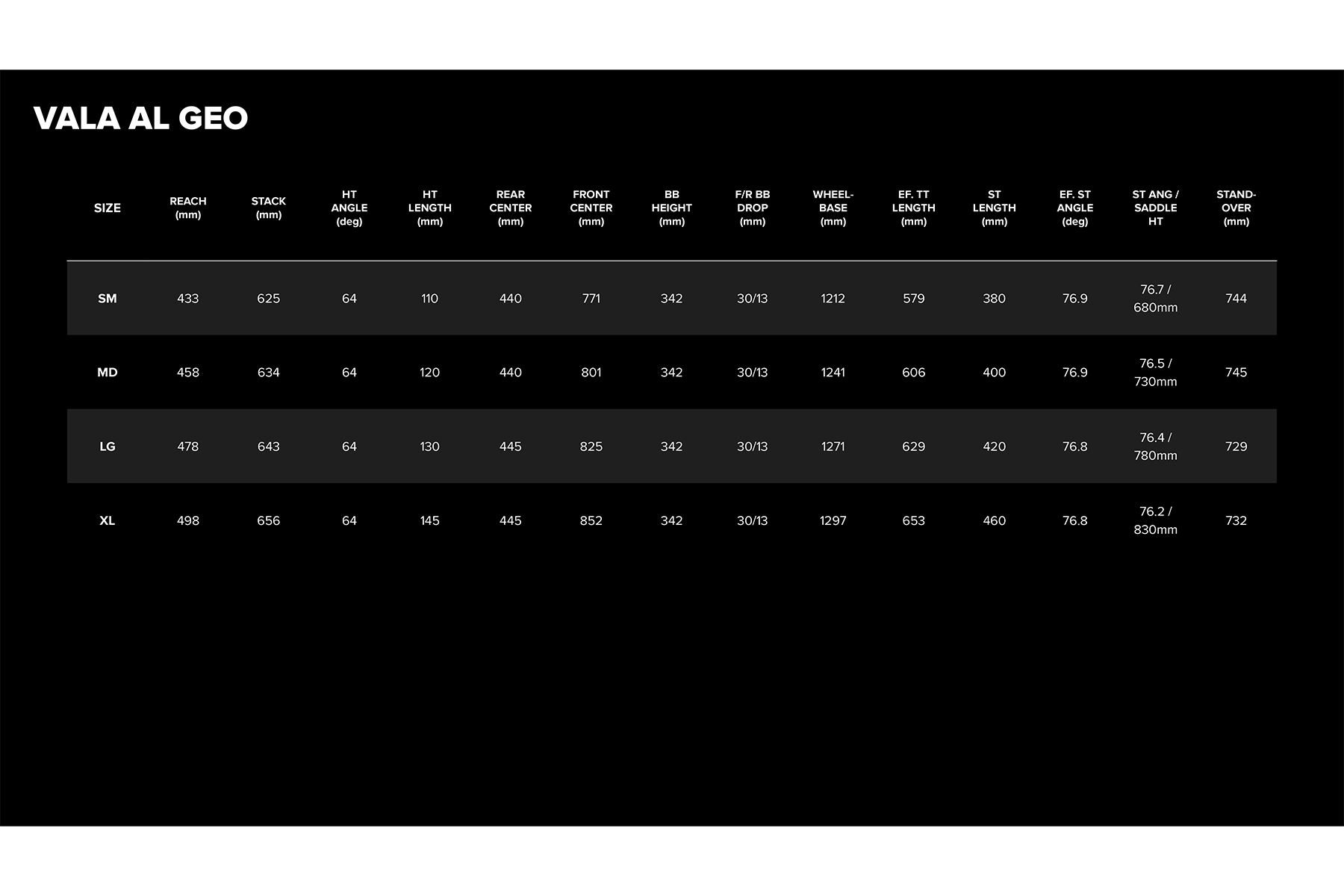
The Builds
Santa Cruz offers only two build options with the Vala AL: the AL Deore and the AL 70. Both Builds come equipped with RockShox suspension, with the main differences being in the drivetrain, brakes, and wheels.
The $5,999 AL Deore build has the lower price of the two, and features a Shimano Deore drivetrain along with Shimano Deore brakes. Money is saved in the suspension spec area with an inline RockShox Deluxe Select rear shock and RockShox Psylo Gold RC front fork. Overall, it is an undeniably budget build, but it gets the Vala AL in under $6k, making it the most affordable eMTB in Santa Cruz’s lineup.
The AL 70 build looks almost identical to the Vala 70 build on the carbon model. Going down the spec sheet, and only the rear shock stands out as different. The AL 70 gets a RockShox Super Deluxe Base instead of the Fox Float X used on the Vala 70. The AL 70 is $6,849, and the Vala 70 is $7,649, so there’s only $800 in it for basically a carbon frame upgrade, which doesn’t seem like that much.
Full build details are as follows:
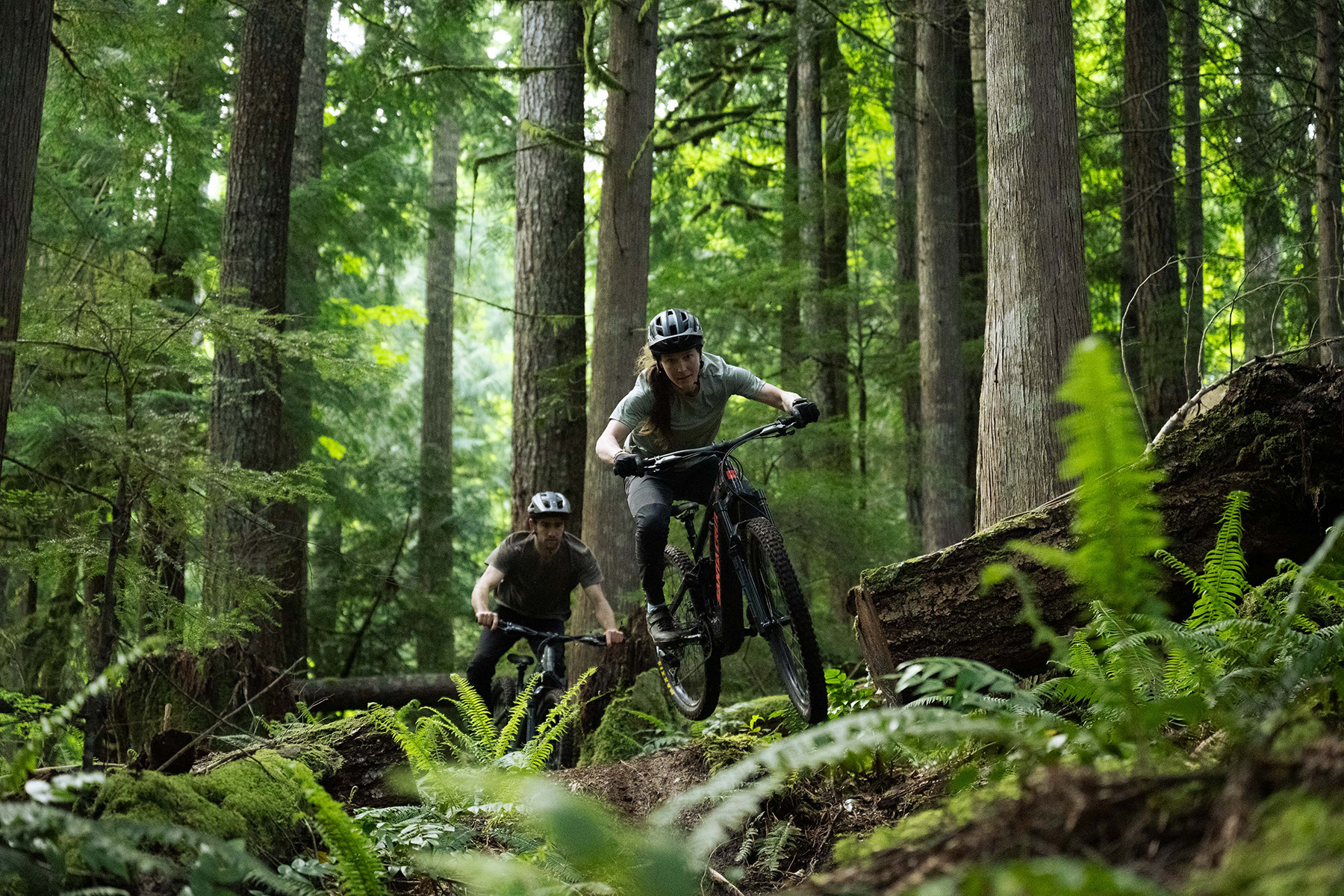
Vala AL Deore ($5,999 USD):
- Drivetrain: Shimano Deore 12sp
- Brakes: Shimano Deore M6120 (220 mm front rotor / 203 mm rear)
- Fork: RockShox Psylo Gold RC (160 mm)
- Shock: RockShox Deluxe Select
- Wheels: WTB ST Tough 30 rims / WTB Frequency Sport hubs
- Dropper Post: SDG Tellis
Vala AL 70 ($6,849 USD):
- Drivetrain: SRAM Eagle 70 T-Type
- Brakes: SRAM DB8 (220 front rotor / 200 mm rear rotor)
- Fork: RockShox Zeb Base (160 mm)
- Shock: RockShox Super Deluxe Base
- Wheels: Reserve 30 HD AL rims / SRAM MTH 716/746 hubs
- Dropper Post: SDG Tellis
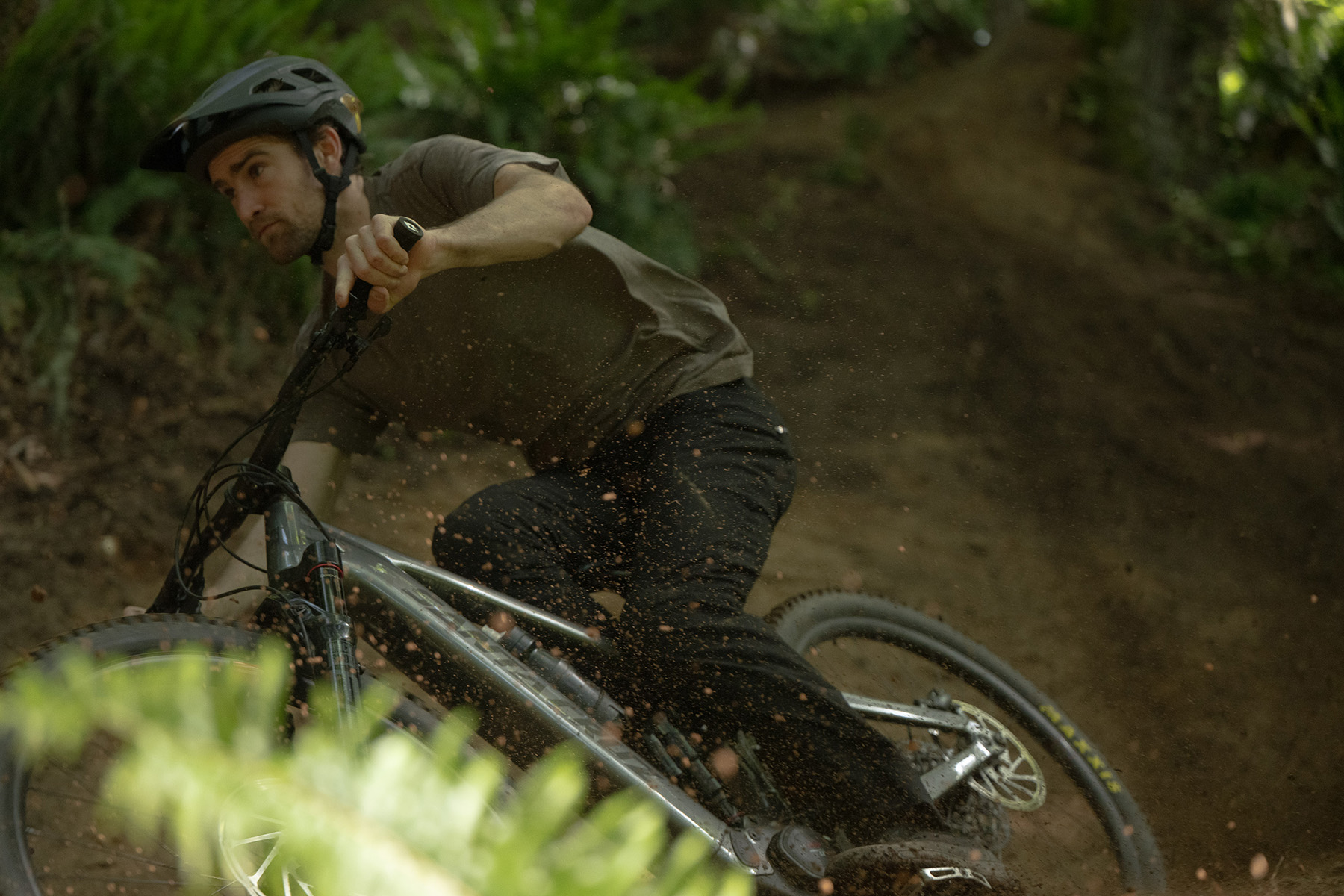
Some Questions / Things We’re Curious About
(1) One of the carbon Vala’s strongest traits is its low weight for a full-power eMTB. The aluminum versions are both considerably heavier (as to be expected); how will their heavier weight affect the handling?
(2) The carbon Vala was notably quiet in the cable rattle department. What will the aluminum Vala’s cable management look like, and will it too be quiet?
(3) How much of a hit to the range will we get due to the Vala AL being a good bit heavier?
(4) Will we miss the adjustable geometry and suspension of the carbon Vala?
(5) Will there be a noticeable difference in ride feel between the carbon and aluminum Vala?
Bottom Line (For Now)
The Vala AL is Santa Cruz’s first aluminum eMTB. As a result, it is less expensive than the carbon Vala, and on paper, it has met Santa Cruz’s goal of making the Vala within reach for more riders. The Vala landed on top of our list of favorite Trail eMTBs, and we praised its low weight and ride characteristics. Santa Cruz claims the Vala AL offers the same ride quality as the carbon Vala, so it will be interesting to see how the Vala AL will compare.
